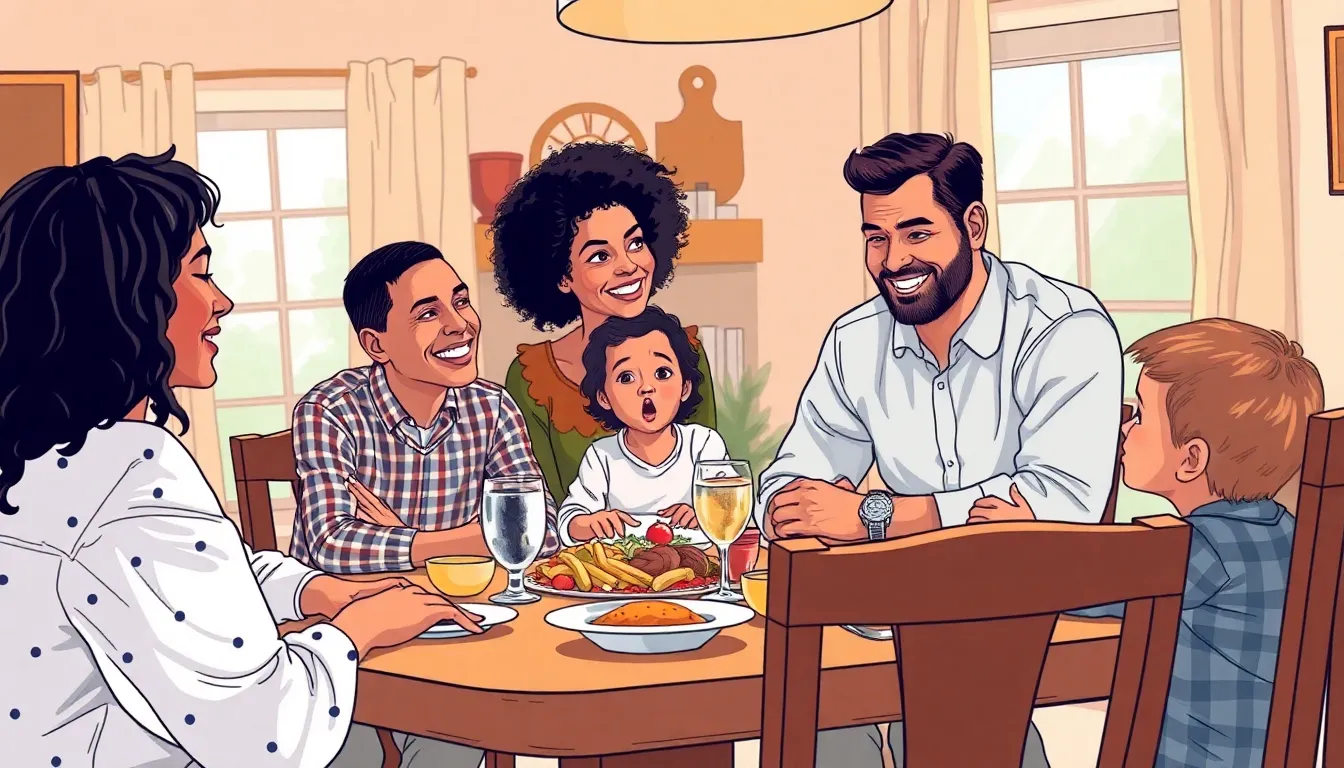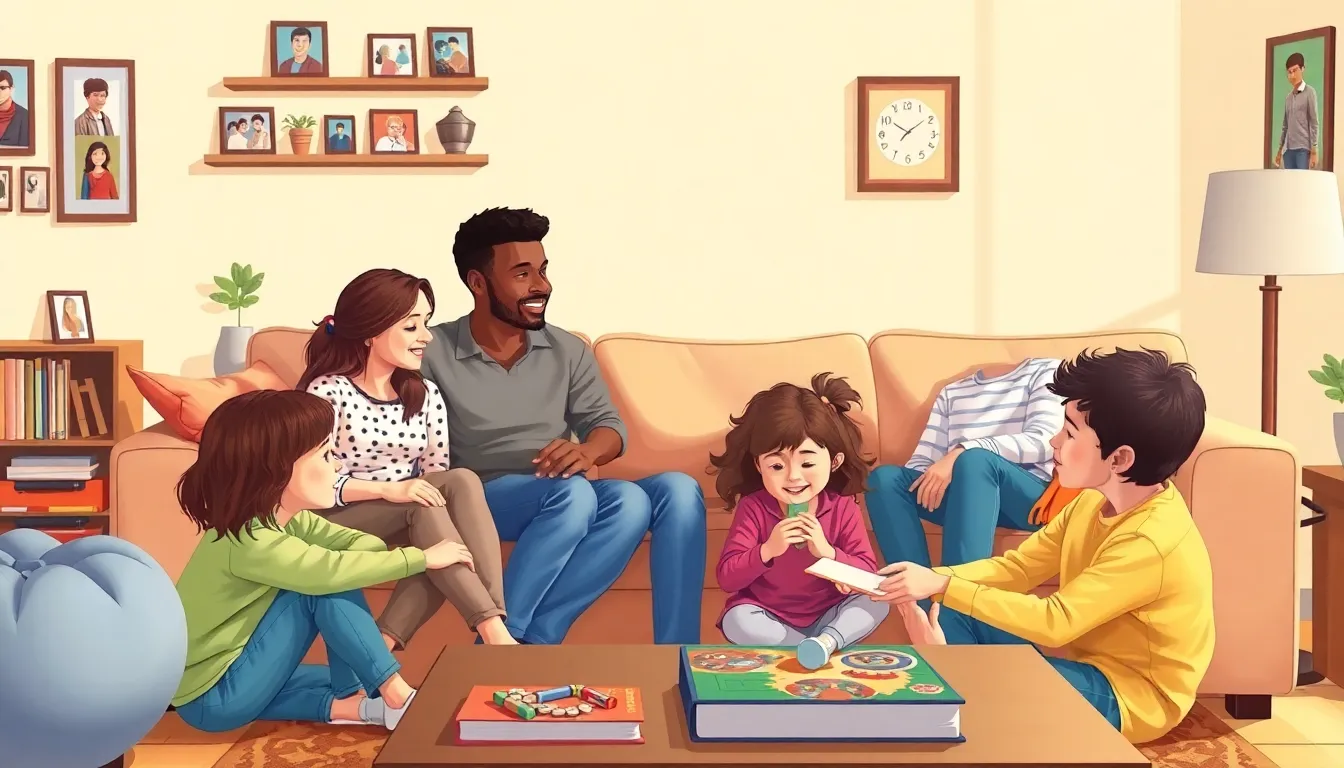Family dynamics can feel like a never-ending sitcom, complete with quirky characters and plot twists that keep everyone on their toes. From the overzealous aunt who thinks she knows best to the rebellious teenager who believes they’re the next rock star, these interactions shape the very fabric of family life. Understanding these dynamics isn’t just for therapists; it’s for anyone who’s ever tried to navigate the wild world of family relationships.
what are family dynamics
Family dynamics encompass the interactions, relationships, and behaviors among family members. These interactions often shape individual identities and influence emotional well-being. Each member plays a distinct role, whether it’s the nurturing parent, the rebellious teen, or the supportive sibling.
Communication styles differ significantly among family members. Open dialogue fosters connections, while unresolved conflicts can hinder relationships. Many families experience a mix of both positive and negative dynamics that impact daily life.
Cultural background plays a crucial role in shaping family dynamics. Variations in traditions and values influence how family members interact with one another. Diverse family structures, such as nuclear, extended, or blended families, add complexity to these dynamics.
Life stages also affect family interactions. As children grow, their needs and roles change, which can alter existing dynamics. Transitioning from childhood to adolescence introduces new challenges, as teens seek independence while parents navigate their roles.
Awareness of family dynamics can facilitate better relationships. Recognizing each member’s strengths and weaknesses aids in addressing conflicts and promoting understanding. Resources like family therapy provide tools for improving communication and resolving issues effectively.
Families thrive when dynamics are balanced. Emphasizing empathy, respect, and support strengthens bonds among members. Understanding individual roles and collective goals creates a harmonious environment where all feel valued and included.
Key Components of Family Dynamics


Family dynamics encompass various elements that define how members interact and relate to one another. Understanding these key components provides insight into the functioning and emotional well-being of a family unit.
Roles Within the Family
Family members play distinct roles that contribute to the overall dynamic. Parents often act as caregivers and authority figures while providing stability. Siblings may take on roles such as the protector, perpetuator of rivalry, or mediator, affecting how conflicts are resolved. Each member’s behavior influences others, shaping relationships and expectations. Recognizing these roles helps families navigate challenges more effectively and promotes healthier interactions.
Communication Styles
Communication styles significantly impact family dynamics. Open and honest communication fosters trust and strengthens connections among members. Conversely, poor communication often creates misunderstandings and unresolved conflicts. Assertive communication encourages expressing feelings constructively, enabling families to address issues proactively. Additionally, non-verbal cues play an essential role in conveying emotions. Different styles can either enhance relationships or lead to alienation, underscoring the importance of awareness in family interactions.
The Impact of Family Dynamics
Family dynamics significantly influence emotional relationships and behavioral patterns within a household. Understanding these effects helps navigate complexities in family interactions.
Emotional Relationships
Emotional relationships are shaped by the connections family members share. Trust builds through open communication, allowing feelings to be expressed freely. Conversely, unresolved conflicts breed tension, impacting emotional stability. Positive reinforcement strengthens bonds, while negative interactions can lead to emotional distance. Active listening plays a crucial role in fostering empathy among family members. The emotional climate of a family can affect individual well-being, further highlighting the importance of nurturing these relationships.
Behavioral Patterns
Behavioral patterns within families reflect the dynamics at play. Members often adopt roles, such as caretaker or peacemaker, that influence interactions. Patterns of conflict resolution can dictate how issues are addressed, whether through avoidance or confrontation. Consistency in behavior helps establish routines, while inconsistency may create uncertainty. Observing and addressing maladaptive behaviors prevents escalation of conflicts. Understanding these patterns enables families to cultivate healthier relationships and promote positive behaviors.
Changes in Family Dynamics
Changes in family dynamics often arise from significant life events and cultural influences. These shifts can profoundly impact relationships and interactions among family members.
Life Events and Transitions
Life events such as marriage, divorce, or the birth of a child reshape family roles and responsibilities. Each transition introduces new challenges and opportunities for growth. For example, welcoming a newborn alters the focus within the household and demands adjustments in daily routines. Parenting styles may clash, leading to conflicts or bonding moments. Additionally, children reaching milestones like adolescence or graduation can shift dynamics further, as parents navigate the complexities of independence. Awareness of these transitions encourages families to communicate openly, fostering healthier relationships during pivotal moments.
Cultural Influences
Cultural backgrounds significantly shape family dynamics, influencing values, norms, and communication styles. Diverse family structures, including single-parent families or multigenerational households, create unique dynamics that reflect cultural practices. For instance, in some cultures, respect for elders is paramount, guiding interpersonal interactions and conflict resolution. Customs surrounding celebrations, roles in caregiving, and expectations around education further reflect cultural influences. Families that embrace and understand these differences often experience stronger connections. Engaging in cultural traditions enhances unity and reinforces family bonds.



